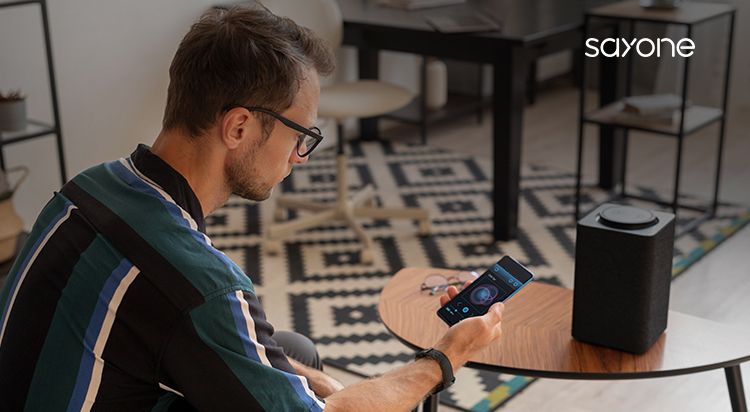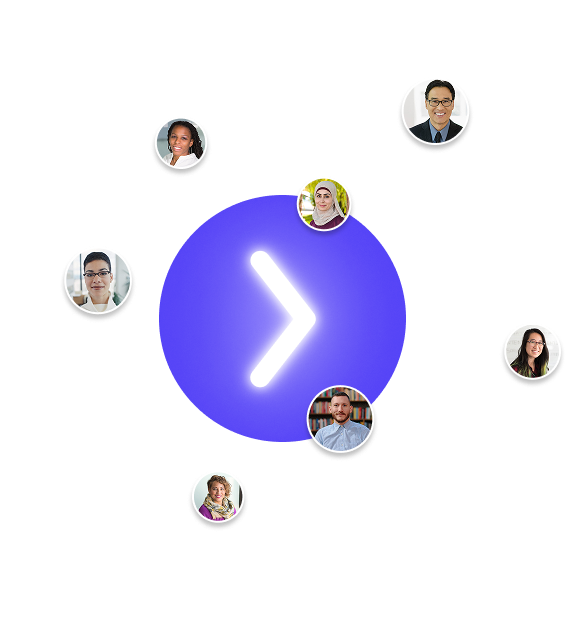
Subscribe to our Blog
We're committed to your privacy. SayOne uses the information you provide to us to contact you about our relevant content, products, and services. check out our privacy policy.

Real PradJune 23, 202511 min read

Generating table of contents...
The initial phone call is more than just a logistical step, it shapes the patient’s very first impression of your clinic. For over a decade, SayOne has supported the healthcare industry, observing how this important interaction is often hindered by long hold times, administrative slowdowns, and restricted booking hours.
Our work with artificial intelligence began well before the recent surge in generative AI Trends.
Years before solutions like ChatGPT gained widespread attention, we were already building AI-driven tools to address real healthcare challenges. Now, with the introduction of advanced Large Language Models (LLMs), hospital management teams have new opportunities to improve the way they connect with patients from the outset.
❝Our goal was to move beyond simple automation and create a truly intelligent, empathetic first point of contact that understands patient needs and delivers on the promise of accessible healthcare for everyone. This inspired the creation of our voice-enabled assistant - a virtual receptionist designed to greet every patient.”
Drawing on our extensive experience in pre-training and fine-tuning AI models with healthcare-specific data, we have built a system that provides reliable, context-aware responses without the risk of inaccurate information. It is capable of managing the entire booking process, ensuring each patient interaction is handled with care and accuracy from the very first moment.
Clinic appointment scheduling is often more complicated than it appears. While patients expect a quick and easy process, many clinics struggle with outdated systems and manual workflows that create unnecessary friction.
Through years of working closely with healthcare providers, we identified several recurring challenges that hinder both patient satisfaction and staff productivity.
Here are some of the key issues we set out to address:
Limited Booking Hours:
Many clinics only accept appointments during business hours, making it difficult for patients who need to schedule outside of these times. This results in missed opportunities and frustration for those with busy schedules.
Long Wait Times and Missed Calls:
Front-desk staff are frequently overwhelmed by high call volumes, leading to long hold times or unanswered calls. This not only affects the patient experience but can also result in lost bookings.
Manual Data Entry and Human Error:
Relying on staff to manually record appointments increases the risk of errors such as double-booking, incorrect patient details, or misplaced records. These mistakes can disrupt clinic operations and impact patient care.
Lack of Real-Time Updates:
Without instant synchronization between booking systems and clinic calendars, it’s easy for appointments to become outdated or for staff to miss last-minute changes, causing confusion and inefficiency.
No Automated Reminders:
Many clinics still depend on staff to remind patients about upcoming appointments, which is time-consuming and often inconsistent. Missed reminders can lead to higher no-show rates and wasted resources.
By addressing these pain points, our goal was to create a solution that brings clarity, reliability, and convenience to the entire booking process - for both patients and healthcare providers.
When we set out to design our AI-powered voice assistant, our ambition was to reimagine the entire patient journey - from the moment someone thinks about booking an appointment to the follow-up after their visit. We began with a blueprint that focused on creating a solution that is not just functional, but truly supportive at every step.

Our brainstorming sessions brought together experts from healthcare, AI, and user experience design. We mapped out every possible scenario a patient might encounter, from initial inquiries to last-minute changes. Our primary goal was to ensure that the assistant could guide patients through each stage with clarity and empathy.
Key Objectives of Our Solution:
Traditional voice assistants often force users into rigid, scripted exchanges. We wanted our assistant to allow patients to speak naturally - whether they’re saying,
“Can I book an appointment for next Monday afternoon?” or asking, “Is Dr. Mehra available this week?”
The assistant understands and responds appropriately without any hallucinations, making the interaction feel authentic.
One of our core objectives was to ensure the assistant could manage unpredictable questions, such as, “Can I bring my child along?” or “What documents do I need to bring?”
Our AI is trained to handle such queries smoothly, providing accurate information or seamlessly escalating to a human when needed.
The assistant is designed to learn from every interaction. The more your patients use it, the better it understands their preferences and needs. For example, when a patient says, “Book my usual appointment,” the assistant recalls their past choices and tailors its response accordingly.
4. Eliminating Frustrating Loops:
We focused on avoiding repetitive or circular conversations. Our assistant keeps track of context, ensuring patients don’t get stuck in endless clarification cycles.
❝We believe a truly intelligent assistant should not only answer questions, but also anticipate needs and remember preferences. Our vision is to make every patient’s journey as smooth and personal as possible - right from the very first interaction.” - SayOne
By embedding these principles into our design, we’ve created a voice-assistant that genuinely supports patients and clinics alike, making each step of the healthcare journey more approachable and reassuring.
Creating a voice assistant that can manage the complexities of clinic appointment booking requires a methodical, multi-layered approach. Our development process was designed to build a solution that is not just technologically advanced, but also reliable and easy for patients to use.
Here is a step-by-step look at how we brought our assistant to life.
The foundation of our assistant is a conversational large language model (LLM) that we trained from scratch, specifically using data drawn from real clinical and healthcare environments.
In this initial, self-supervised phase, the model processed a vast collection of dialogues and appointment-related exchanges from clinics, allowing it to learn the nuances of healthcare communication, how to interpret patient questions, understand intent, and structure responses in a way that reflects the realities of clinical workflows.
By grounding the training in authentic clinic data, the assistant developed an understanding of common scenarios, terminology, and patient needs unique to healthcare settings.
Conversational Understanding in Healthcare:
The model learned to recognize the flow of multi-turn conversations typical in clinics, track context across booking and follow-up queries, and respond appropriately to clarifications or changes in appointment details.
Intent Recognition and Clinical Nuance:
By analyzing real-world booking interactions and patient-provider dialogues, the LLM became adept at identifying what patients mean - even when requests are indirect or phrases in everyday language, such as asking about available slots, insurance coverage, or special requirements for appointments.
Natural, Context-Aware Response Generation:
The training process enabled the assistant to generate replies that sound natural and are tailored to the clinical context, ensuring that responses are both accurate and relevant to the specific needs of patients and staff.
By feeding the model with authentic clinic and healthcare data related to booking and appointments, we ensured that our AI assistant is not only capable of general conversation but is also deeply aligned with the requirements and expectations of real-world medical environments, making it a reliable partner for both patients and providers.
Once the assistant could "think," we needed to give it a way to "hear." For this, we integrated Deepgram, a market-leading speech-to-text engine. In a voice-based interaction, speed and accuracy are everything. If a patient says,
"I'd like to book an appointment for next Tuesday afternoon," any delay or error in transcription can derail the entire conversation.
Deepgram’s advanced deep learning models provide near-instant and highly accurate transcriptions, ensuring that the patient's spoken words are captured perfectly, allowing for a truly fluid and natural interaction.
Speech-to-Text:
The assistant uses Deepgram’s technology to convert spoken language into accurate text in real time. This ensures that every word a patient says is understood correctly, even with accents or background noise, making the booking process smooth and reliable.
Text-to-Speech:
After processing the patient’s request, the assistant responds using natural-sounding synthesized speech. This allows the conversation to feel personable and interactive, as the assistant can clearly communicate confirmations, instructions, or follow-up questions back to the patient.
A generic AI doesn't know your clinic's schedule or which doctors are available. To solve this, we connected our assistant to a vector store, a specialized database designed for high-speed information retrieval.
We populate this store with your clinic’s specific data: doctor schedules, appointment types, office hours, and answers to frequently asked questions.
When a patient asks, "Is Dr.Raj available on Friday?", the assistant queries this secure, dedicated knowledge base, not the open internet. This ensures every answer is 100% accurate and based solely on your clinic's operational reality, completely eliminating the risk of incorrect or "hallucinated" outputs.
In the final phase, we brought all the components together - the conversational brain, the listening ears, and the clinic knowledge and subjected the system to rigorous testing.
We simulated thousands of real-world patient scenarios, from simple bookings ("Can I get an appointment for a check-up?") to complex requests ("I need to reschedule my 3 PM appointment from last week to sometime next week."). This end-to-end validation ensures that every part of the system works in harmony to provide a reliable, error-free booking experience for every patient.
Key Capabilities of our AI Voice Assistant That Manages Sales related Enquiries
Throughout every implementation, we prioritized data security and compliance with healthcare privacy regulations, using robust encryption and access controls.
Regular staff training sessions supported smooth adoption and built trust in the new system. By automating routine tasks and providing immediate, accurate responses, our voice assistant and chatbots have freed up staff to focus on more complex needs, ultimately improving both operational efficiency and user satisfaction.
Imagine a voice assistant for your clinic that manages bookings, reaches out to patients who have enquired, follows up, and conducts every conversation in natural, engaging language - just as you saw in our video demo.
With our expertise, we can develop a custom AI voice assistant that serves as your clinic’s virtual front desk, available around the clock to handle appointments, respond to questions, and guide patients through each step, all while remembering their preferences and ensuring every detail is addressed.
Choosing us for your AI voice assistant project means partnering with a team that brings deep healthcare experience and a strong record of delivering reliable, secure, and highly personalized solutions.
Our assistants are designed to fit into your existing systems, automate repetitive administrative work, and provide accurate information that reduces errors and helps create a positive patient journey.
If you’re ready to see how a truly intelligent, patient-focused voice assistant can benefit your clinic, reach out to us today for a personalized quote and discover how we can help you set a new benchmark for patient engagement and operational excellence.

We're committed to your privacy. SayOne uses the information you provide to us to contact you about our relevant content, products, and services. check out our privacy policy.

About Author
Co-founder and CEO at SayOne Technologies | Helping startups and enterprises to set up and scale technology teams- Python, Spring Boot, React, Angular & Mobile.

We collaborate with visionary leaders on projects that focus on quality